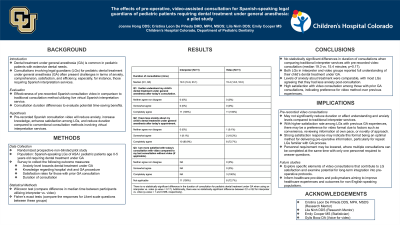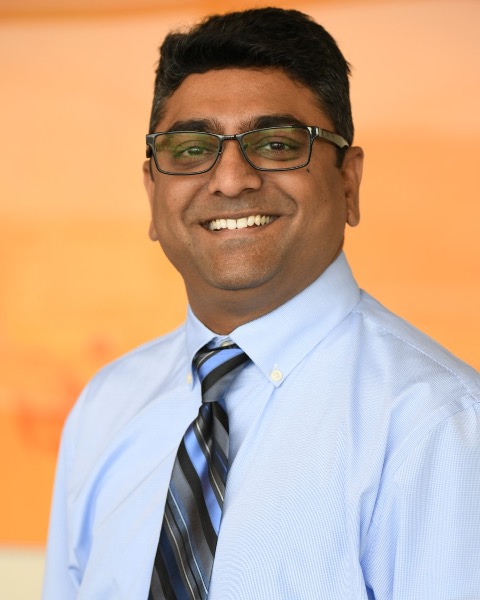Practice Management
455 - Pre-Op Video Consultation Effects in Pediatric Dental Care

.jpeg.jpg)
Joanne Hong, DDS
Pediatric Dental Resident
Children's Hospital Colorado, Aurora, CO
Children's Hospital Colorado Department of Pediatric Dentistry
Aurora, Colorado, United States- LN
Lila Ninh, D.D.S.
Clinical Assistant Professor
Children's Hospital Colorado
Aurora, Colorado, United States 
Chaitanya P. Puranik, BDS, MS, M.Dent.Sci, Ph.D.
Program Director
Children’s hospital Colorado
Children's Hospital Colorado and School of Dental Medicine, University of Colorado Anschutz Medical Campus
Aurora, Colorado, United States
Presenting Author(s)
Research Mentor(s)
Program Director(s)
Purpose: Pediatric dental treatment under general anesthesia (GA) often necessitates intricate consultations for Spanish-speaking legal guardians (LGs). This study compares the effectiveness of a pre-recorded Spanish consultation video with traditional live virtual Spanish interpretation.
Methods: In this randomized, non-blinded pilot study, LGs of pediatric patients aged 0-5 undergoing GA dental treatment were surveyed. The focus was on LG-reported anxiety, knowledge about hospital procedures and GA, satisfaction (especially among those with prior GA consultations), and consultation duration, analyzed using Wilcoxon or Fisher’s exact tests.
Results: No statistically significant differences in duration of consultations when comparing traditional interpreter services with pre-recorded video consultation (median 19.3 vs. 15.4 minutes; p=0.17). Both LGs in interpreter and video groups reported full understanding of their child’s dental treatment under GA. Levels of anxiety about treatment were comparable, with most LGs agreeing that they had less anxiety post-consultation. High satisfaction with video consultation among those with prior GA consultations, indicating preference for video method over previous experiences.
Conclusion: The study showed no significant difference in consultation duration or levels of understanding and anxiety when comparing interpreter services to video consultations for pediatric dental treatment under GA. However, notably higher satisfaction among those with previous consultations suggests a preference for the video format. This preference may stem from the convenience and ability to control the pace of information. The findings imply that while videos do not necessarily decrease time or improve knowledge acquisition, they may enhance the consultation experience, indicating a potential shift towards video consultations for better patient satisfaction, particularly for repeat legal guardians. Personnel requirement may be lowered as well, where multiple consultations can be completed at the same time with only one personnel required to answer questions. Future research should investigate the aspects of video consultations that boost satisfaction to optimize pre-operative information delivery for non-English-speaking families.

.jpg)